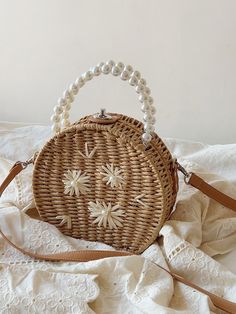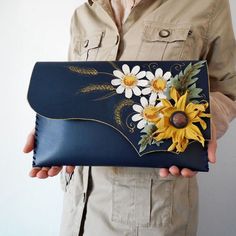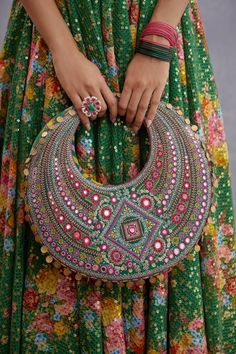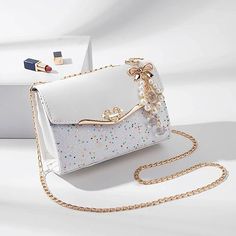Hand Design Purse in Fashion
Introduction
The world of fashion is an ever-evolving landscape where creativity meets functionality, and nowhere is this fusion more evident than in hand-designed purses. From their historical roots to their modern-day interpretations, hand-designed purses embody the spirit of individuality and craftsmanship. This exploration delves into the significance of hand-designed purses within the fashion industry, examining their evolution, cultural impact, and the role they play in personal expression.
Historical Context

The history of purses can be traced back to ancient civilizations, where they served not just as fashion statements but as practical accessories for carrying essentials. In medieval Europe, small bags were often attached to belts, showcasing the early blend of utility and style. By the 16th century, as fashion began to evolve, purses became more decorative, crafted from luxurious materials and embellished with intricate designs.
The 19th century marked a significant turning point in purse design. The Industrial Revolution enabled mass production, making purses more accessible. However, the uniqueness of hand-designed purses began to shine through in the arts and crafts movement, which emphasized craftsmanship over mass production. This period saw artisans creating bespoke items that reflected personal stories and cultural heritage.
The Rise of Hand-Designed Purses
The late 20th century brought a resurgence in the appreciation for handmade goods, as consumers began to seek items that reflected their individuality. This shift was driven by a growing awareness of sustainability and ethical production practices. Hand-designed purses emerged as a symbol of this movement, with artisans focusing on quality materials and unique designs that stood apart from mass-produced alternatives.
Craftsmanship and Artistry
One of the defining characteristics of hand-designed purses is the craftsmanship involved in their creation. Artisans often spend hours, if not days, meticulously crafting each piece, paying attention to every detail. The choice of materials—ranging from leather to fabric, beads, and metal accents—plays a crucial role in the overall aesthetic and functionality of the purse.
The artistry of hand-designed purses can be seen in various techniques, such as:

- Embroidery: This traditional technique adds texture and intricate patterns, allowing artisans to tell stories through their designs.
- Leatherworking: Skilled leather artisans create durable yet elegant pieces, often incorporating techniques like tooling and dyeing to enhance the material’s natural beauty.
- Weaving and Knitting: These methods enable the creation of unique fabric purses, often featuring vibrant colors and patterns that reflect cultural influences.
The combination of these techniques results in purses that are not only functional but also artistic expressions of the designer’s vision.
Cultural Influence and Personal Expression
Hand-designed purses often draw inspiration from the cultural backgrounds of their creators. Artisans may incorporate traditional patterns, colors, and motifs that reflect their heritage. This cultural infusion enriches the fashion landscape, allowing consumers to connect with diverse stories and traditions through their accessories.
Symbol of Individuality
In a world increasingly dominated by fast fashion, hand-designed purses offer a refreshing alternative. They allow consumers to express their unique identities, moving away from the uniformity often found in mass-produced items. Each purse tells a story, whether it be through the choice of materials, the craftsmanship, or the design elements.
For many fashion enthusiasts, a hand-designed purse becomes a statement piece, a conversation starter that reflects their personal style. The ability to customize or choose from limited editions further enhances this individuality, making each purchase feel special.
Sustainability and Ethical Fashion
The growing demand for sustainable fashion practices has led to an increased interest in hand-designed purses. Many artisans prioritize ethical sourcing of materials and sustainable production methods, appealing to conscious consumers who seek to make responsible choices.
- Eco-Friendly Materials: Many designers are now using organic, recycled, or upcycled materials in their creations, reducing the environmental impact associated with traditional fashion production.
- Local Economies: Supporting hand-designed purse makers often means investing in local economies and small businesses. This helps preserve traditional crafts and encourages community development.
- Slow Fashion Movement: The slow fashion movement advocates for quality over quantity, promoting the idea that investing in well-made, durable items is more sustainable than continuously purchasing cheap, disposable fashion. Hand-designed purses embody this philosophy, encouraging consumers to cherish their accessories rather than treat them as temporary items.
The Modern Hand-Designed Purse Market
With the rise of e-commerce and social media, artisans now have greater access to global markets. Platforms like Etsy, Instagram, and independent websites allow designers to showcase their work and connect directly with consumers. This shift has democratized the fashion industry, enabling artisans from diverse backgrounds to reach audiences that appreciate their craftsmanship.
Trends in Hand-Designed Purses

The modern market for hand-designed purses has seen various trends emerge, reflecting both consumer preferences and broader societal changes:
- Minimalism: Simple, clean designs with an emphasis on functionality have gained popularity. These purses often feature high-quality materials and subtle details, appealing to those who favor understated elegance.
- Bold Colors and Patterns: On the other end of the spectrum, many consumers are drawn to vibrant, eye-catching designs that make a statement. Artisans are experimenting with colors and patterns to create unique pieces that stand out.
- Customization: Personalized purses, whether through monograms, colors, or design choices, have become a sought-after trend. Consumers appreciate the opportunity to own something that feels uniquely theirs.
- Crossover Styles: Many hand-designed purses now blur the lines between traditional and contemporary styles, creating hybrid designs that appeal to a broad range of tastes.
Challenges Faced by Artisans
While the market for hand-designed purses is growing, artisans face several challenges:
- Competition: The rise of independent makers means increased competition, making it essential for artisans to differentiate themselves through quality and unique design.
- Pricing: The time and effort involved in handcrafting purses often lead to higher prices. Convincing consumers to invest in these items over cheaper, mass-produced alternatives can be difficult.
- Sustainability: While many artisans strive for sustainable practices, sourcing eco-friendly materials can be challenging, especially when competing with cheaper options.
Conclusion
Hand-designed purses occupy a unique space within the fashion industry, merging artistry, individuality, and sustainability. As consumers continue to seek items that reflect their values and personal styles, the significance of these bespoke accessories will only grow. They serve as a testament to the importance of craftsmanship in a fast-paced world, offering a tangible connection to the artisan’s story and the cultural heritage they represent.
The future of hand-designed purses promises to be vibrant and dynamic, with artisans pushing the boundaries of creativity while remaining rooted in tradition. As the fashion landscape continues to evolve, these unique creations will undoubtedly play a vital role in shaping our understanding of style, sustainability, and self-expression.


